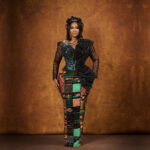Art, Body, Culture: Oscar Awuku’s Anansinisim is Shaping Africa’s Creative Scene

In contemporary African art, few emerging voices are as visually arresting and philosophically rich as Oscar Korbla Mawuli Awuku. The Ghanaian artist—often referred to as the “Anansinisim Priest”—has carved out a distinctive visual language through a practice that merges body painting, performance, and cultural semiotics. His artistic universe, known as Anansinisim, is a tapestry of symbols, mythologies, and embodied storytelling that reimagines the ancient in a bold modern frame.

At the heart of Awuku’s practice lies the Adinkra lexicon—those powerful Ashanti symbols that compress proverbs, ethics, and worldview into single visual marks. But Awuku does not simply reference Adinkra. He translates them. He expands them. He drapes them across the contours of the human form, transforming the body into a living manuscript where cultural memory is inscribed in flesh.
Anansinisim: A Cosmology of Skin and Story
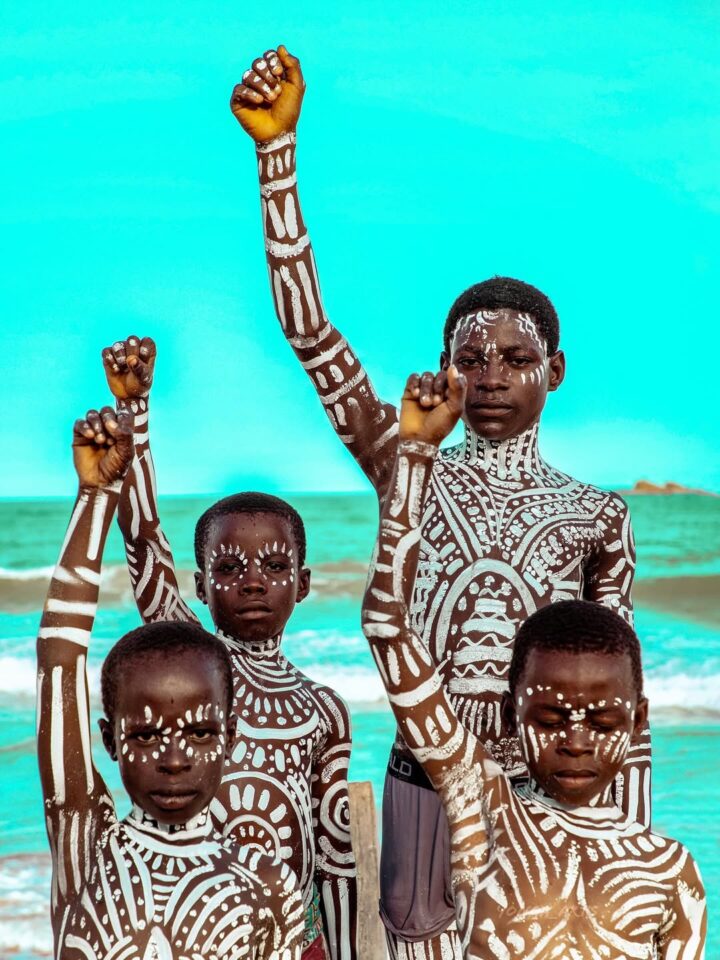
Anansinisim draws its name and spirit from Kweku Ananse—the trickster, the shape-shifter, the eternal storyteller of Akan folklore. In Awuku’s hands, Ananse becomes both muse and methodology. The artist adopts the spider’s web as an artistic philosophy: interconnected, layered, strategic. Like the spider, Awuku constructs meaning through deliberate patterns—each line a thread binding the past to the present.
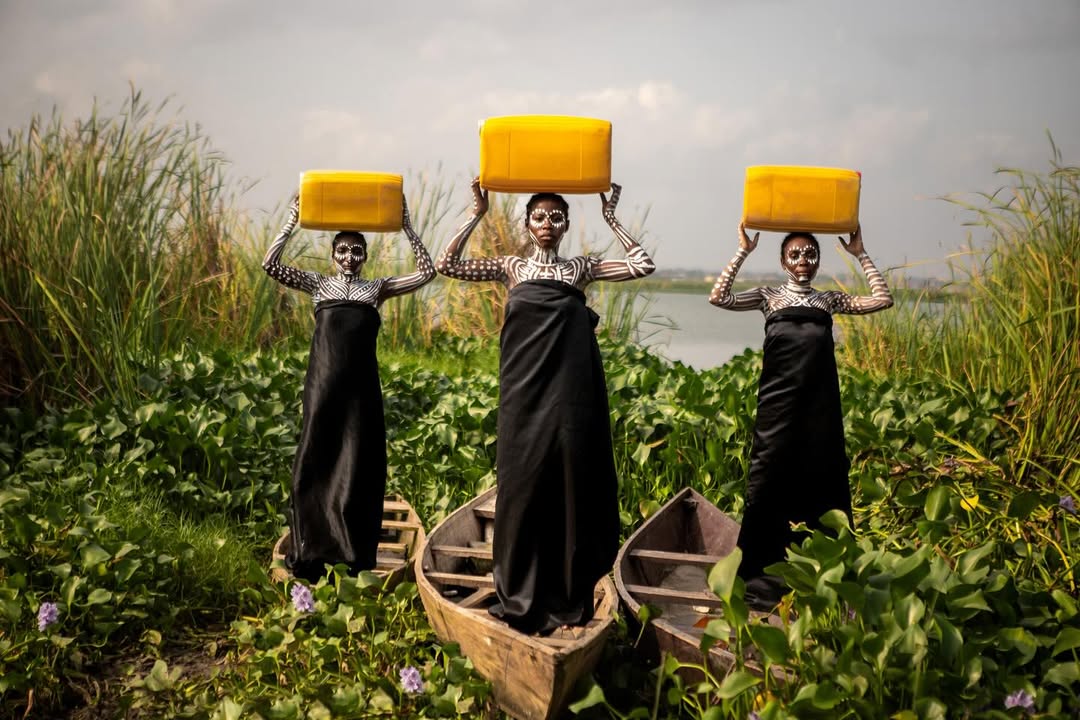
His body paintings often form “webs” of Adinkra-infused motifs, creating visual tapestries that evoke ancestry while asserting the relevance of indigenous knowledge in contemporary identity-making. The models become conduits—walking embodiments of folklore, philosophy, and resistance.
Rooted in Adinkra: Symbols as Living Archives

Awuku’s palette is not just pigment; it is ontology. Popular symbols like Gye Nyame, Sankofa, Fawohodie, or Dwennimmen are abstracted into new, rhythmic patterns that glide across shoulders, cheekbones, and torsos. Unlike their fixed form on cloth or architecture, Awuku’s Adinkra motifs move, breathe, flex. They remind us that tradition is not static—it is kinetic, adaptable, alive.
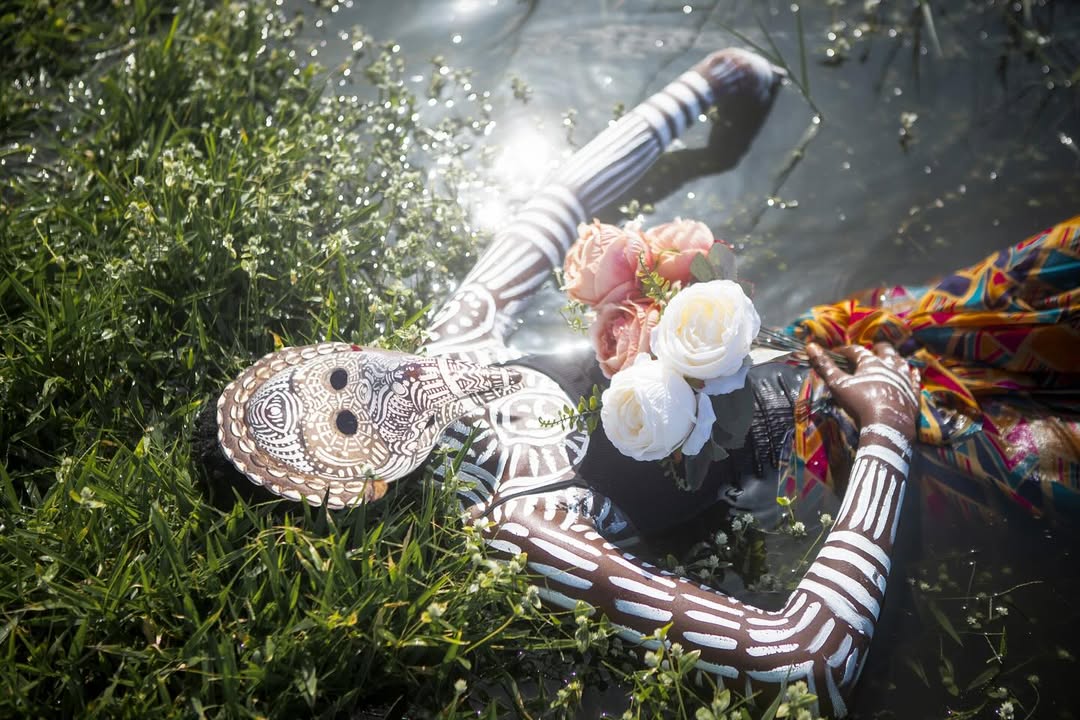
His visual language, therefore, becomes a kind of cultural activation: a re-inscription of African philosophical systems onto the very medium that carries identity—the body.
Mythology as Technology
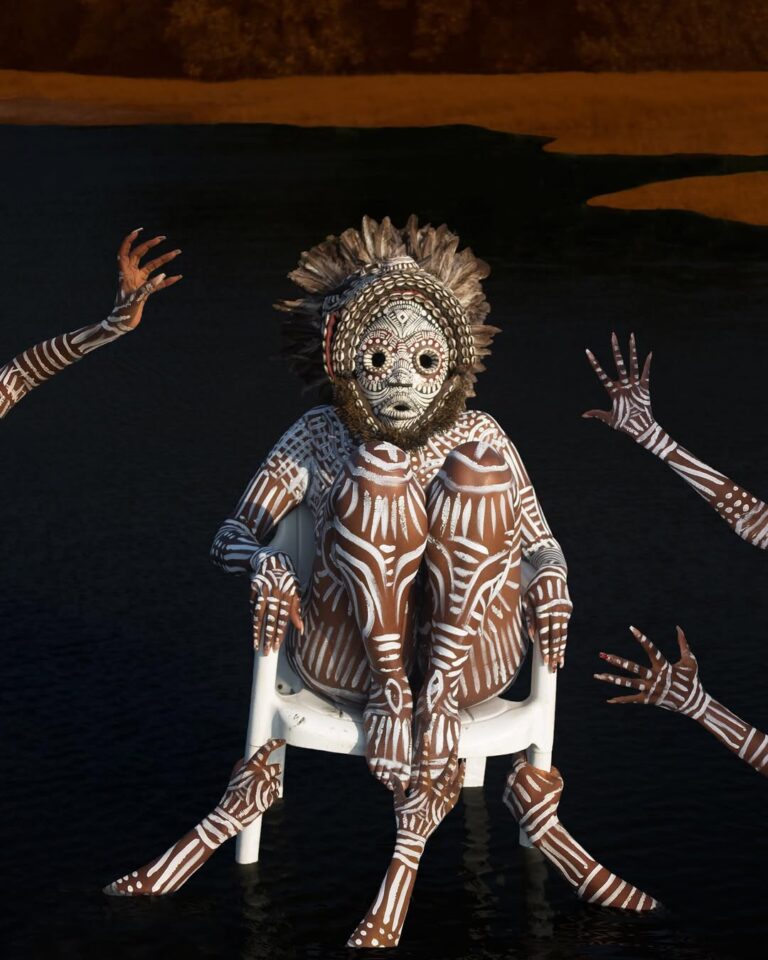
Awuku’s work stands at an intersection where folklore meets futurism. By invoking Ananse, he invokes a legacy of storytelling as a form of knowledge transfer—a proto-technology. In Ghanaian cosmology, the spider is not merely a character but a metaphor for intellect, creativity, and survival. Awuku channels this mythic intelligence to frame body painting as both archive and algorithm.
In his compositions, bodies are transformed into narrative devices. Lines imitate spider webs; geometric arrangements evoke communal systems; pattern density mirrors the complexity of ancestral wisdom. The effect is deeply contemporary, even futuristic, situating African storytelling within a global artistic dialogue about identity, memory, and embodiment.
Performance as Ritual, Art as Resistance
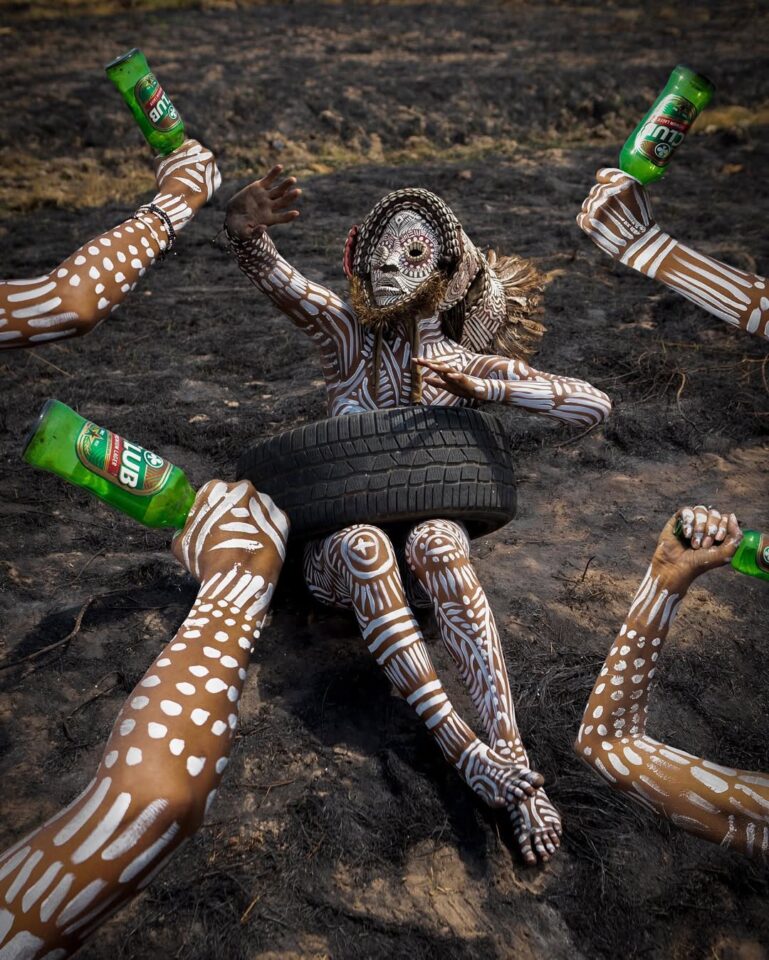
The process of painting—slow, intimate, precise—often feels ritualistic. Awuku’s sessions resemble ceremonies of reclamation. In a world where African identities have been historically fragmented, suppressed, or misinterpreted, Anansinisim reclaims the body as a site of both spiritual and cultural affirmation.
His works challenge colonial perceptions of nudity and the African body, repositioning painted skin as a dignified canvas of history rather than an exoticized spectacle. The result is art that resonates with political and emotional urgency.
A New Visual Dialect for a New Generation

Oscar Korbla Mawuli Awuku’s Anansinisim is more than an aesthetic practice—it is a language, a philosophy, a cultural proposal. It exists at the nexus of tradition and innovation, turning bodies into repositories of indigenous symbols and mythological wisdom.

Through Anansinisim, the skin becomes story. The story becomes symbol. And the symbol becomes a living, breathing articulation of African identity—rooted in the past, unraveled through the present, and reaching boldly into the future.


